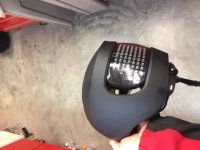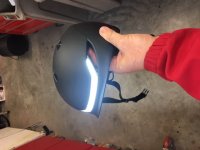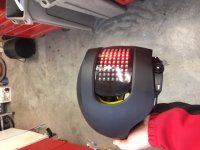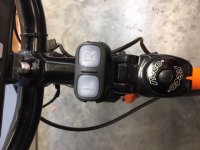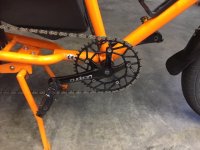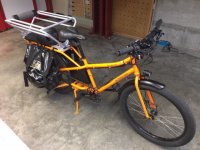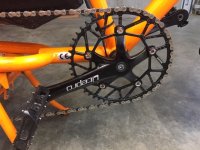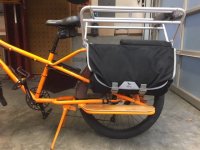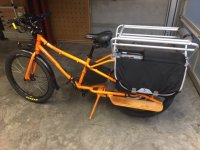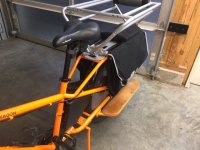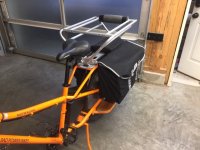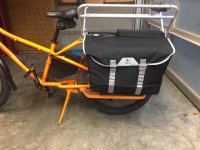ah, yes, i missed that somehow.

https://endless-sphere.com/forums/viewtopic.php?f=6&t=103634#p1514960
fwiw, side ligths, or at least downlights, can be a really good idea, because even as long as bikes like this are, people still don't "see" them very well for some reason. i had that problem on crazybike2 which is a simlar size to yours (very different frame/etc though).
your taillgith strips give some downlighting behind you from the part on the lower area of the tubes, but i'd guess you don't have any lighting in the middle.
so you could add some red strips under the cargo sidebars so they shine on the ground itself, and the leds / strips would be just visible from the side at a diastance, as well.
then you can add some white strips under the downtube, and that will shine on the ground and forward.
appropriately-colored lights on the undersides of the toptube and seatstay/rack frame would ligth the bike itself from "inside", and make it much much more visible.
you don't have to run these lights at full brightness either; adding either diodes or resistors between the strips and the voltage source dim them. i did that with the strip on the front of the canopy, so it is more like "clearance lights" just to show the canopy is there, rather than like a headlight (which is what the front downtube lighting is more like)
i also added dimming between the top canopy tube rear strip and the power source, and the brake light switch bypasses that dimming to brighten it to full, along with the side tail lights, as well as turning on completely separate strips at right angles to the other ones, to make sure they can be seen day or night.
the turn signal strips are amber in parallel with the tail light strips in the rear, vertically, and if youw anted to do it you ahve room on your tubes on the outboard sides of the tail strips to do the same thing. similary you can do that on the fork tubes as well. i used a simple automotive flasher for led lights, and the turn signal switch built into one of the crappy ebike switch clusters that cmae with one of my kits. i htink it was supposed to be a 3speed switch for the kit, but it was marked as a turn signal with arrows, so it was handy.



